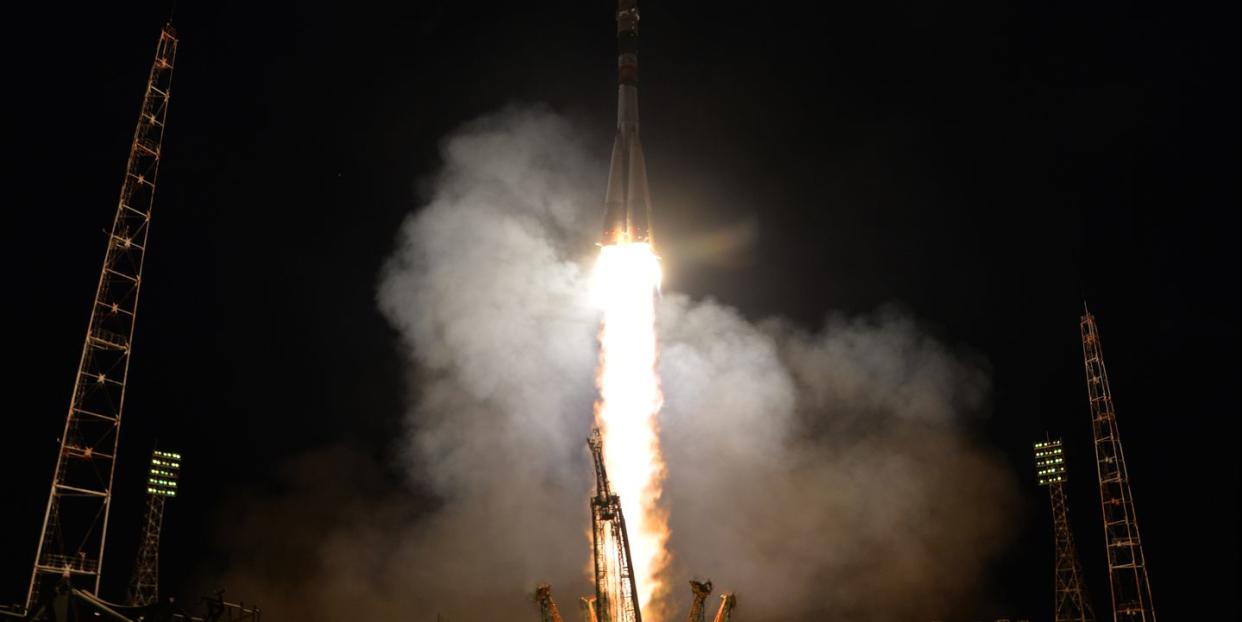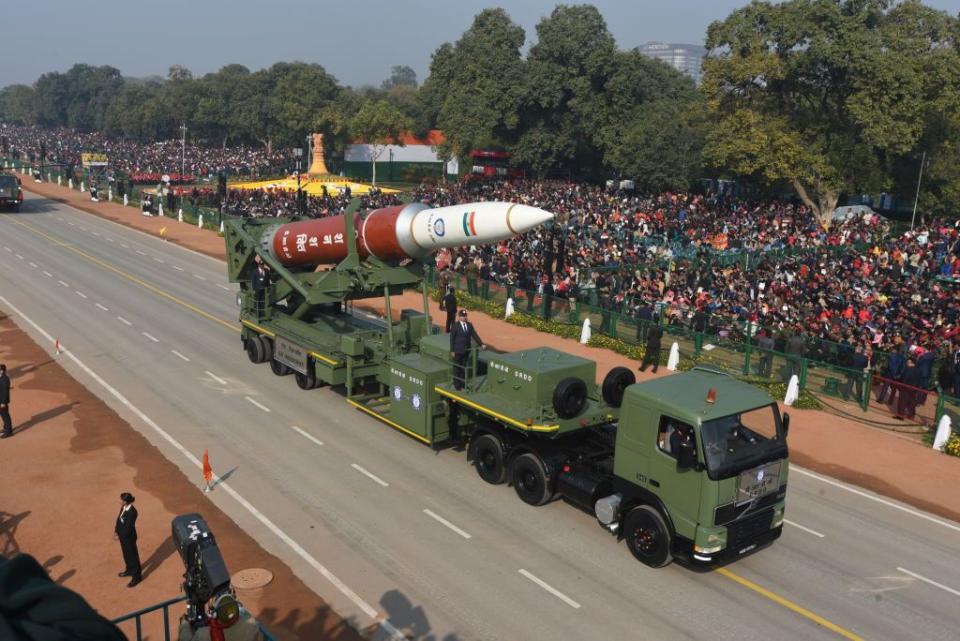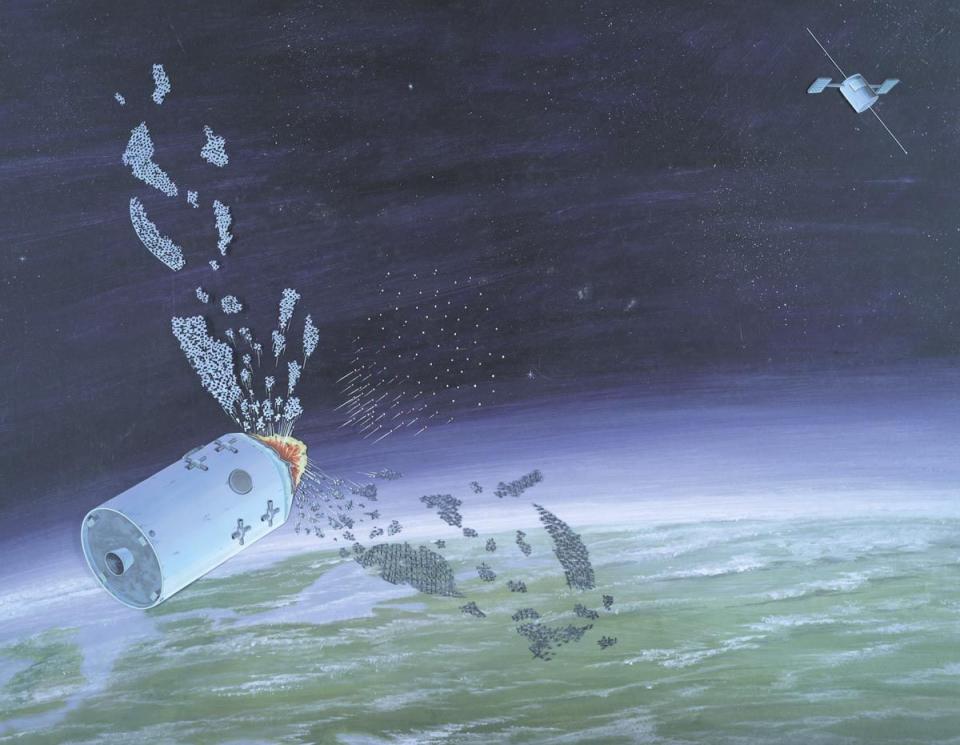We Caught Russia Testing a Space-Based Weapon

The U.S. Space Command says Russia tested a space-based, anti-satellite weapon.
The satellite released an object close to another Russian satellite, simulating the release of the anti-satellite weapon system.
The same satellite was observed in 2019 approaching a U.S. spy satellite.
The U.S. Space Command has caught a Russian satellite in what appears to be an anti-satellite weapon test. The same satellite, Cosmos 2543, was seen in 2019 approaching a classified U.S. reconnaissance satellite.
Space Command, a combatant command of the U.S. Department of Defense, believes the two separate, but linked events add up to the test of a space-based weapon designed to kill or disable enemy satellites in orbit. The tests will likely pressure the U.S. into developing killer satellites of its own.
Dive deeper. Read best-in-class military features, discover the coolest combat tech, and get unlimited access to all things Pop Mech—starting now.
![Photo credit: Giuseppe De Chiara 1968 [CC BY-SA 3.0 (https://creativecommons.org/licenses/by-sa/3.0)] - Wikimedia Commons](https://s.yimg.com/ny/api/res/1.2/v3N6ZF2J5xuiyFAPS54S8A--/YXBwaWQ9aGlnaGxhbmRlcjt3PTk2MA--/https://media.zenfs.com/en/popular_mechanics_642/e44b1db23a7f509120756740d9c51a2f)
On July 15, Cosmos 2543 released a new object in orbit near another Russian satellite, Space Command says. The release is believed to be linked to a test of Russia’s ability to release satellites from other satellites in orbit. Gen. John Raymond, Commander of Space Command and the U.S. Space Force Chief of Space Operations, released a statement on the test:
"The Russian satellite system used to conduct this on-orbit weapons test is the same satellite system that we raised concerns about earlier this year, when Russia maneuvered near a U.S. government satellite. This is further evidence of Russia's continuing efforts to develop and test space-based systems, and consistent with the Kremlin's published military doctrine to employ weapons that hold U.S. and allied space assets at risk."
On its own, the test isn’t really a big deal; larger satellites disperse smaller satellites all the time. Another sat, Cosmos 2542, actually launched Cosmos 2543. And the U.S.'s X-37B unmanned space plane, for example, released several smaller sats during its last mission in space.
But Space Command views the test in a larger context; in 2019, Cosmos 2543 maneuvered to tail an American spy satellite, USA-245. According to Gunther’s Space Page, USA-245 is believed to be a KH-11 optical spy satellite that launched in 2013. Space watchers claim USA-245 scooted away from the Russian satellite to take up position in another orbit.

Space Command apparently believes two separate tests are actually a single test. The first practices the approach of a killer satellite to its target, while the second preps for the release of the anti-satellite weapon itself. This splitting of tests into smaller ones conducted separately and months apart is similar to how Russia secretly tested the 9M729 land-based long range cruise missile, the missile that ultimately ended the 1987 INF missile treaty.
The Russian anti-satellite test is considered a “non-destructive” test: No satellites were harmed during the course of the tests. That’s a good thing, because destructive satellite tests tend to scatter debris in orbit, which is dangerous to other satellites across a wide area. In 2019, a destructive Indian anti-satellite weapon test, Mission Shakti, created 60 pieces of orbital debris and drew harsh condemnation from NASA.

It isn't clear how the Russian anti-satellite weapon actually destroys an enemy satellite. One way is to simply crash into the enemy sat. Another method is to explode what amounts to an orbital shotgun, a warhead packed with high explosives designed to pepper enemy satellites with lethal metallic pellets.
This latest test of a Russian anti-satellite system will pressure the U.S. into developing its own system. The U.S. has built several systems in the past, including the ASAT missile launched from a F-15 Eagle fighter and ground-based systems.
The SM-3 ballistic missile interceptor and Ground Based Interceptor, both missiles designed to shoot down incoming ballistic missile warheads, have some anti-satellite capabilities. But the test of a space-based system will give fuel to proponents of an American space-based anti-satellite system, one that can be launched years in advance and moved into position during a crisis.
You Might Also Like

